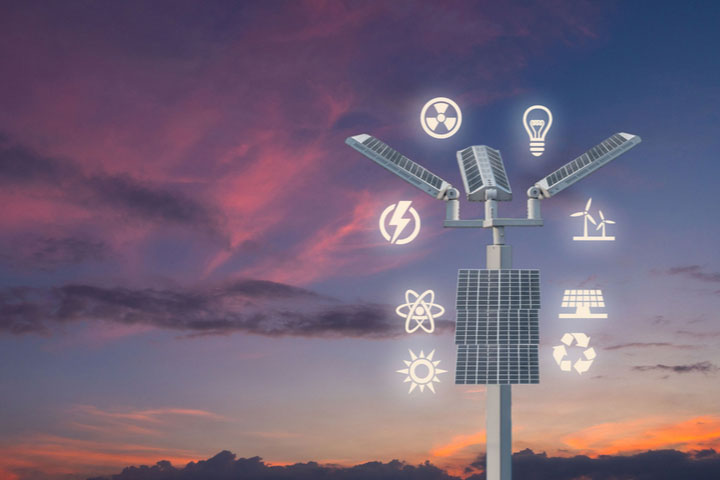The Evolution of a Smart Street Lamp Post
The traditional streetlight was a solitary figure, its purpose singular and its connection to the grid a one-way street. The smart light pole, however, represents a technology upgrade. Its design is modular and purpose-built to house a suite of digital devices, sensors, and IoT communication equipment. This integration eliminates urban clutter and leverages an existing, ubiquitous power and physical infrastructure to deploy next-generation services. The technical architecture of this hub is a complex interplay of hardware and software, designed for scalability, security, and interoperability.
In the grand design of a smart city, the smart light pole stands not merely as a source of illumination but as the foundational nervous system that communicates the whole city through this IoT lamp post. It is a multi-functional nexus, a physical conduit for the flow of data that transforms a collection of urban services into a cohesive, intelligent ecosystem. At the core of its transformative power lies its sophisticated role as a "Connectivity and Communication Hub," a role that extends far beyond simple lighting control to enable the dense, real-time data exchange that modern urban life demands. The energy-efficient smart pole integrates functions such as smart street lighting, 5G micro base stations, intelligent monitoring, security alarms, meteorological services, wireless networks, information dissemination, and EV charging etc. This article will delve deep into the technical components and functions that empower the smart light pole, exploring how it serves as a critical node for Wi-Fi hotspots, 5G small cells, and robust wireless backhaul systems.
The Internet Access Layer: Bridging and Monitoring the City Through SCCS System
At the most immediate level, the smart light pole's communication function is to provide direct, localized connectivity to citizens and devices.
Public Network - Web the Whole City Gathering
The deployment of Wi-Fi hotspots on smart poles offers free or low-cost internet access to the public. This service is a fundamental building block of digital equity, ensuring that residents and visitors can stay connected for information, navigation, and civic services.
The data generated from these hotspots, while anonymized to protect privacy, can be invaluable for urban planning. It provides insights into pedestrian foot traffic, real-time monitoring, and weather detection. Call the nearest police station for assistance, etc. Those multifunctional devices really bring benefits to citizens. Due to the GPS within the smart pole, it can be quickly located if anything happens, such as accidents or damage to the smart pole. Smart poles bring convenience to city officials and optimize public spaces and services.
The deployment of Wi-Fi hotspots on smart poles is a direct investment in digital equity. It transforms public spaces—parks, plazas, bus stops, and main streets—into connected zones, ensuring that residents and visitors, regardless of their socioeconomic status, can access vital online services. This free or low-cost internet access is a fundamental building block of a modern society, facilitating everything from navigating with real-time transit information to accessing civic services and emergency alerts.
Understand Pedestrian Foot Traffic and Dwell Time: By tracking the concentration of connected devices, city planners can determine which areas are most heavily used at different times of day. This data can inform decisions about where to place new amenities, such as public benches, waste bins, or even pop-up retail kiosks. It helps in designing more efficient and user-friendly public spaces. For example, data might show that a certain park entrance is a bottleneck, leading to a redesign of pathways to improve flow.
Optimize Public Spaces and Services: Insights from Wi-Fi data can directly influence urban planning. If a public square sees a massive influx of people on weekends, city officials might schedule events or deploy temporary sanitation services to that area. The data can also be used to justify investments in new public transit routes or to adjust bus schedules to match actual demand.
Real-Time Monitoring and Environmental Sensing: A City's Vital Signs
The smart light pole's role as a data hub extends far beyond connectivity for people. It is the perfect platform for a distributed network of environmental and urban sensors, providing a constant stream of real-time data that acts as the city's vital signs.
Air Quality and Weather Detection: Integrated sensors measure particulate matter and other pollutants. They also collect micro-weather data like temperature, humidity, and atmospheric pressure. This information is critical for public health advisories and environmental policy. For instance, if an air quality sensor detects a dangerous spike in pollutants, the city can issue a real-time alert and recommend that vulnerable populations stay indoors. The weather data can also be used for smart irrigation systems in public parks, saving water and resources.
Traffic Flow and Congestion Monitoring: The same Wi-Fi and camera systems used for public safety can also be used for advanced traffic analysis. By counting vehicles, measuring their average speed, and detecting congestion, the smart pole provides the data needed to optimize traffic light timings, reroute traffic during accidents, and inform citizens of the fastest routes. This data-driven approach directly reduces traffic congestion, saving commuters time and lowering vehicle emissions.
Enhanced Public Safety and Emergency Response: A City of Guardians
Rapid Emergency Response: A smart pole is often equipped with an emergency button or a panic alarm. When activated, the system can use the integrated GPS to instantly send an alert with precise coordinates to the nearest police or fire station, ensuring a rapid and targeted response.
Damage and Fault Detection: The GPS and communication hub also serve a crucial maintenance function. If a smart pole is damaged—for example, by a traffic accident or vandalism—its internal sensors and GPS can immediately detect the impact and report its location and status to city maintenance crews. This allows for a swift response, minimizing the time the pole is out of commission and ensuring public services are restored quickly. This feature not only brings convenience to city officials but also significantly reduces the time and cost associated with manual inspections and fault reporting.
In conclusion, the smart light pole's role as a "public network" is the engine that drives a smart city's most significant benefits. By seamlessly integrating public Wi-Fi, sophisticated sensors, and direct links to emergency services, it transforms into a highly beneficial piece of public infrastructure. It provides citizens with the connectivity they expect and deserve while simultaneously giving city officials the data and tools they need to make cities safer, more efficient, and ultimately, more livable for everyone. This multifunctional device is a powerful example of how technology can be used to weave the whole city together, creating a truly connected and intelligent urban environment.
Post time: Sep-13-2025











